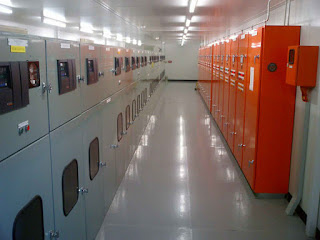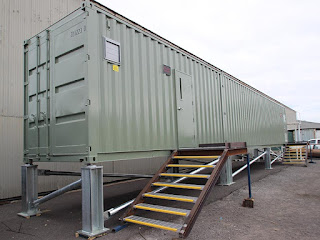E-House Design – PreFab Advantage
As
had been the norm in the industry, an E-House design is always dependent on the
client’s needs for the project and the application. With literally thousands of
various projects heavy industries, all needed e-houses; these are all created
and constructed according to each of their needs.
These
are all employed in various industries. For instance, the oil and gas industry
had depended on e-houses for years on end.
These
days, they are employed more frequently in the installation of equipment in
other industries (mining, metals, chemicals, utilities) and in infrastructures
like data centers, ports and others.
Advantages
The
advantages of e-houses are obvious. In making substations, for instance, the
conventional site-built system is very expensive if not time-consuming for many
projects. In others, the project schedule on the actual space does not allow
for site-built construction.
Sometimes,
building permits for conventional buildings are not available.
E-houses
are the most ideal in these situations. They all are easily installed in so
very little time. With the speed, it does not interfere with the other
activities of the client/organization.
Further,
they can be easily adapted to every situation and application even for an
upgrade or relocation.
Benefits
E-houses
are mostly constructed in line with modular design. This way, there are various
e-house types that can allow tailor-made solutions that can easily be expanded
or moved to another location.
With
the ease of construction, e-houses improve the environmental, health and safety
conditions imposed by many organizations and authorities.
The
pre-fabricated modules enable the reduction of manpower on site, while it
improves the EHS (environment, health and safety conditions) performance. Since
the structures arrive fully equipped and pre-tested, there is no risk of delay
that may happen due to weather conditions, for instance.
Structure
t is
suitable for any project or application. The standard e-house consists of one
module on a pre-cast foundation, whereas a mobile substation is an e-house
module on wheels or support that can be relocated with its foundation.
The
multi-modular e-houses are also available. They comprise several modules that
are placed on a foundation, either on top of or next to each other side by
side. This enables the transport of large houses.
It
also ensures optimal use of the available space.
E-Houses
can be installed on raised platforms. This is to protect them form flooding,
and also to enable the installation of cable trays and bus duct systems under
the e-house without excavation underneath the structure.
An
e-house has an especially resistant housing that protects the switchgears and
switchboards from the harsh environment. Likewise, there is also a special kind
of compact and mobile e-houses which are used for relocation. Mostly, they are
employed in coal mines and caves.
Possibilities
E-Houses
can also be designed for high snow loads as well as high wind speeds, and for
use in seismic zones. The fire-resistant exterior walls protect the switchgear
from external transformer failure are available.
Since
the e-house design stipulates that they are delivered prefabricated and
pre-tested, the projects no longer suffer from delays and construction risks
caused by the weather rather than the use of conventional masonry.




Comments
Post a Comment